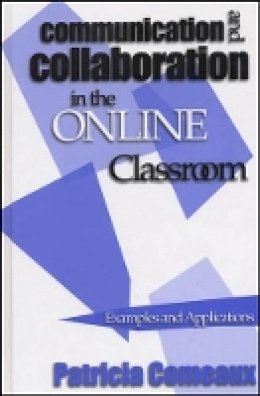Patricia Comeaux is a professor of Communication Studies at the University of North Carolina-Wilmington. Early in her university teaching career, she discovered the value of an interdisciplinary approach to teaching and research when she designed and developed a communication across the curriculum program at Illinois Wesleyan University. Since then, her teaching and research interests have been in observing and examining communication and learning in institutions of higher education. Since the 1990s, her research has focused on the qualitative assessment (observation and examination) of the interpersonal nuances involved with communication and learning in distant education settings. She has served as an outside project evaluator for a number of distance education-funded projects. In addition, she has published numerous articles on topic of collaborative learning in higher education and the impact of interactive technologies on communication and learning.
"Provides readers with a comprehensive understanding of the human communication issues that continue to evolve and impact higher education at an ever-increasing rate." (AAHE Bulletin, July 2003) Communication is fundamental to any teaching endeavor. Ideally, collaboration joins effective communication to create effective learning environments. This is true whether the learning space is brick and mortar or virtual. Patricia Comeaux, et. al., suggest that in order to achieve the benefits that technology can offer for teaching and learning, we need to understand the communication issues that technology surfaces in human interaction. This compilation of experiences with technology in teaching and learning has, as a focus, communication and collaboration. Collaboration is one area of interaction where communication and technology issues intersect the preparation to teach, the act of teaching and the evaluation of teaching and learning effectiveness. It is in these areas that the authors describe their experiences in the context of communication theories. The authors share challenges, benefits and lessons learned from developing programs, creating and teaching courses, and teaching as visiting faculty. The purpose is to provide faculty, graduate students, administrators, and scholars in higher education with real experiences across disciplines. One of the strengths of the book is the wide span of experience and disciplines that have come together to share their stories and analysis of those experiences. Comeaux begins the text with a brief review of the literature relevant to communication, education, instructional technology, and distance education related to communication and collaboration via interactive technology. The contributing authors responded to the following question in each chapter: "how have interactive technologies affected teaching and learning in institutions of higher education?" Dividing the chapters into three sections, authors first address program development. Case studies offer insights gained from collaborating within departments and with key stakeholders in the community. Issues such as managing detractors, facilitating effective project management, and creating dialogues around teaching and learning are explored. The second section focuses on collaboration in course design and teaching as visiting faculty in online courses. Benefits of collaboration as visiting faculty are described and demonstrate the value of interactive technologies in enhancing the learning environment through opportunities like providing content and experiences that the primary course faculty do not have access to. Collaboration in preparing for course content and teaching strategies is seen as paying big dividends even though navigation and negotiation via unfamiliar or, sometimes, unavailable technology was problematic. Lastly, the third section deals with the development of learning communities. In a sense, the last section brings together the essence of communication and collaboration as faculty worked to create cohesive learning communities using interactive technologies. Practical issues like sizes of groups, availability of resources, and time management are explored. Interestingly, these are the same fundamental issues in face-to-face environments. Effective teamwork aimed at a common objective seemed to create similar challenges for this set of faculty. The lessons learned in this section provide a rich source of areas to focus on proactively by anyone attempting to create online learning communities. In the final chapter, Comeaux argues that the authors supported and extended the themes identified in the Introduction; dialogues about teaching and learning with interactive technologies are increasing and being supported by key stakeholders in the teaching-learning community; teaching is "a complex communicative process"; collaborative learning occurs in both traditional and online classrooms; and collaborative learning is a viable approach in interactive environments. She notes that as we gain experiences in online or virtual environments our language will better reflect the key foci for understanding teaching and learning and that it will, in all likelihood, not be on the particular space where instruction occurs. Rather, the focus will be, as this book has demonstrated, on communication and collaboration between all of the players in the teaching-learning environment. This book adds to our understanding of teaching via interactive technologies by providing faculty experiences that they have analyzed for risks and benefits in developing, providing and evaluating teaching via interactive technologies. For faculty developers, the cases can provide starting points for faculty or groups of faculty and administrators interested in using interactive technologies. For those interested in the use of interactive technologies framed within the context of communication and collaboration, the cases and faculty experiences provide a means of surfacing, exploring, validating their assumptions and experiences in online environments. I found the book to be an interesting read. Practically speaking, the case studies are relatively short and organized in a way that it was easy to follow the case description and subsequent analysis. The breadth of faculty experience and expertise provided a rounded view of some of the challenges that faculty face at different times in their own growth and development as teachers. I would recommend the book to faculty, administrators and faculty developers as a useful starting place for exploring how they use the notions of communication and collaboration in their classrooms. (UNC's Effective Teaching web site, September 2002)

